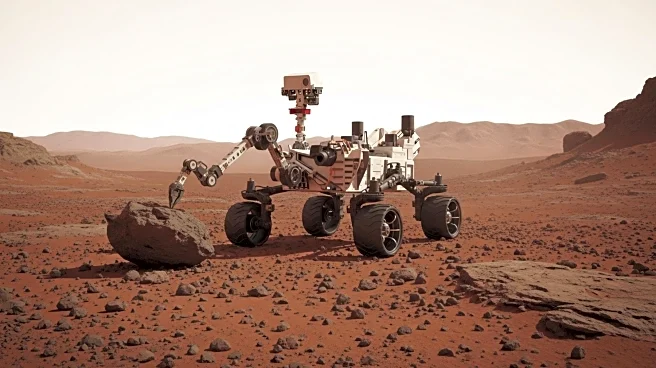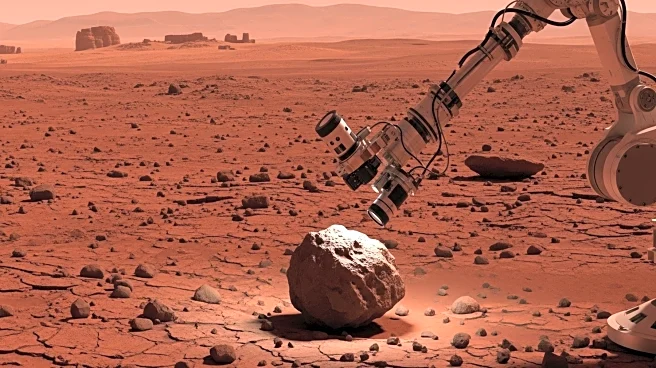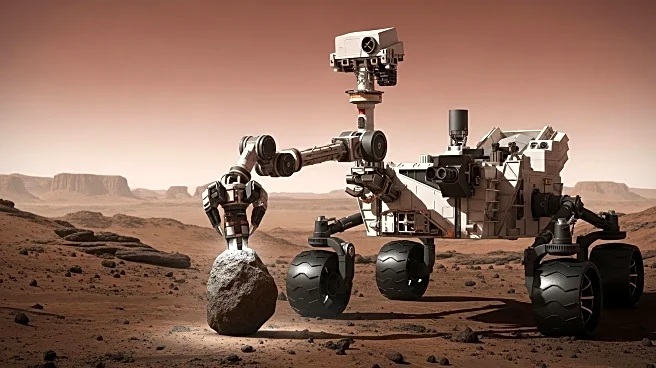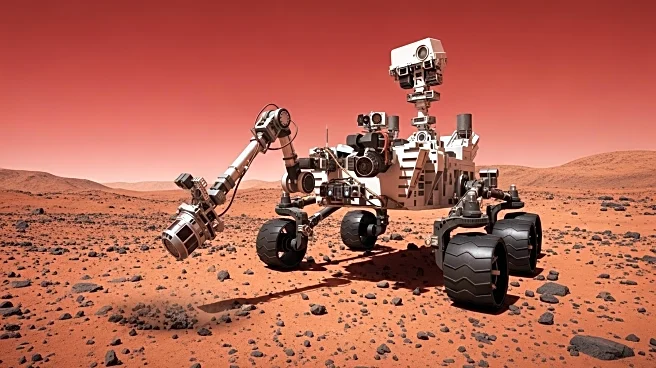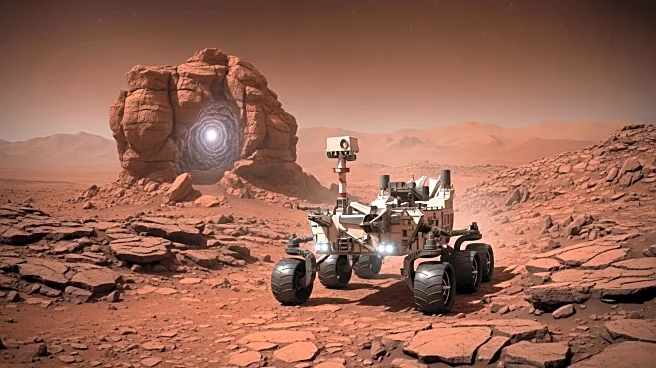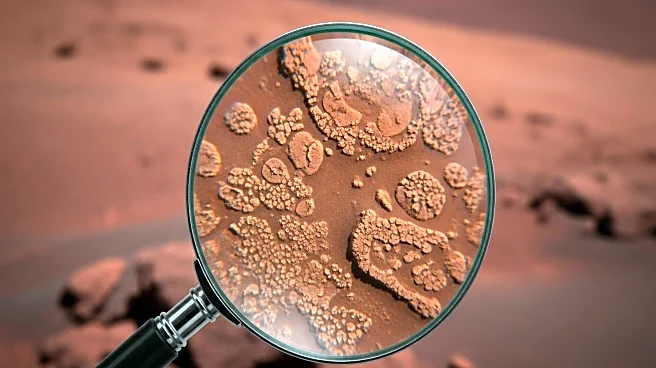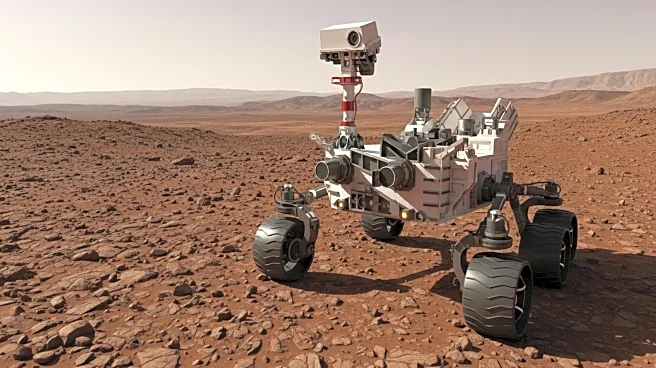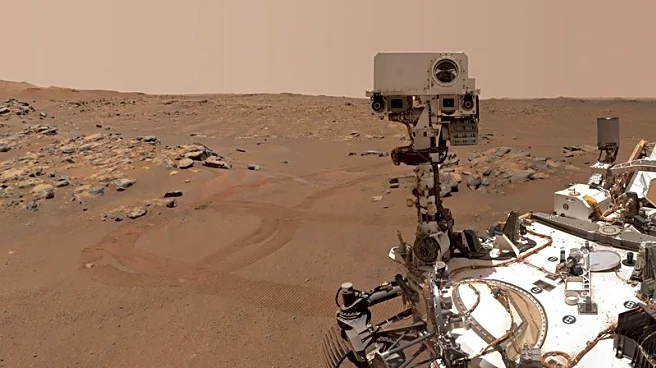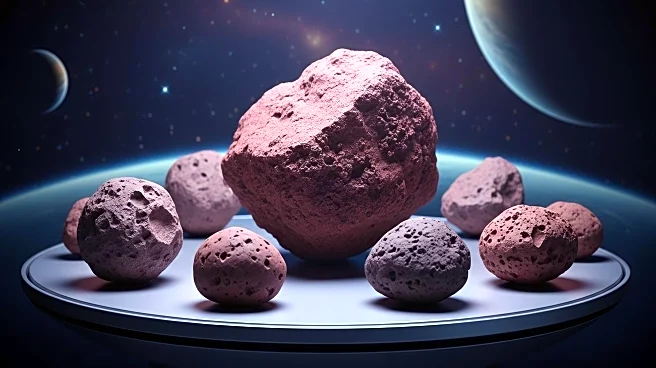What's Happening?
NASA's Perseverance rover has discovered what scientists are calling a 'potential biosignature' in a rock on Mars, named Cheyava Falls, located in the Jezero Crater. This rock contains organic molecules and minerals such as vivianite and greigite, which are often associated with biological processes on Earth. The findings, published in the journal Nature, suggest that these minerals could be the byproducts of ancient microbial activity. The discovery is significant as it has undergone peer review, adding scientific credibility to the initial findings announced by NASA last summer. The rock's age, estimated to be between 2 to 3 billion years old, suggests that Mars may have been habitable for longer periods than previously thought.
Why It's Important?
The discovery of potential biosignatures on Mars is crucial as it represents the most compelling evidence to date of ancient microbial life on the planet. This finding could reshape our understanding of Mars' history and its capacity to support life. If confirmed, it would have profound implications for the search for life beyond Earth, potentially influencing future Mars exploration missions and the prioritization of scientific objectives. The presence of organic molecules and minerals associated with life processes could also guide the development of new technologies and methodologies for detecting life on other planets.
What's Next?
To confirm the biological origin of the findings, further analysis is required, which necessitates returning samples to Earth for more sophisticated testing. This adds urgency to the Mars Sample Return mission, which aims to retrieve samples collected by Perseverance. However, the mission has faced budgetary and scheduling challenges, prompting NASA to explore more cost-effective options. The findings may influence the prioritization of this mission, aligning with broader goals of human exploration and scientific discovery beyond Earth.
Beyond the Headlines
The discovery raises questions about the potential for life in other parts of the solar system and the universe. It also highlights the challenges of conducting remote science and the importance of sample return missions for definitive analysis. The findings could lead to a reevaluation of Mars' habitability timeline, suggesting that life-supporting conditions may have persisted longer than previously believed.
